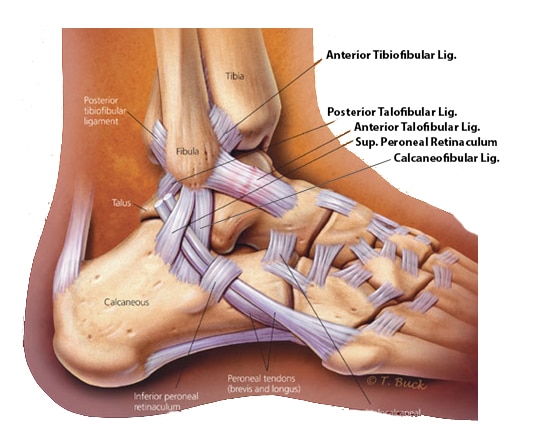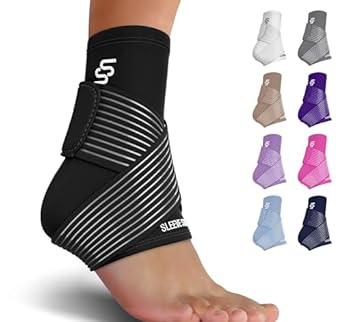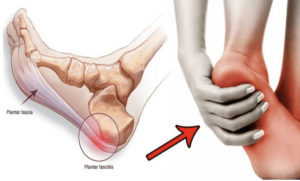
Anatomy
Ankles are located between your leg and your feet, and they are actually made up of three separate joints: the talocrural joint, the subtalar joint, and the inferior tibiofibural joint. These joints unite the main bones in the ankle, which are the talus, tibia, and fibula.
These three joints are the structures that allow the ankle to perform a wide range of movements and to support our body weight while walking or standing up. Ankle ligaments are stretchy bands of tissue which are mostly conformed by collagen and connect the bones together. Ligaments don’t have a large blood supply, which is why they can take a longer time to heal than other tissues.
Main ankle ligaments
- The deltoid ligament: this triangular ligament is the main ankle ligament and it is attached to the medial malleolus (the bony protrusion on the inside of your ankle), and it is composed of the anterior tibiotalar, tibiocalcaneal, posterior tibiotalar and the tibionavicular ligaments. These smaller ligaments connect to four different places in the ankle.
- The anterior and posterior talofibular ligaments: these ankle ligaments connect the lateral portion of the ankle to the lateral malleolus of the fibula.
- The calcaneofibular ligament: this ligament connects the calcaneus (the bone in your heel) to the fibula.
- The anterior and posterior inferior tibiofibular ligaments: these ankle ligaments connect the tibia and fibula together.
- The syndesmotic ligament: although this ligament isn’t a part of the ankle joint itself, it provides stability and can be damaged by an ankle sprain. It runs between the tibia and the fibula.
Since the lateral ankle ligaments are weaker than the medial ligaments, ankle injuries commonly occur when the ankle twists inward, straining the weaker lateral ligaments. Of all the joints in the human body, the ankle is the one that gets most commonly injured.
Repetitive damage to your ankle ligaments can make them more lax, thus decreasing the joint’s stability and making it more likely to develop more severe ankle sprains in the future. If you are having on going issues then you need to seek ankle sprain treatment which may include orthotics. This will help foot posture and reduce risk of secondary complications like a Mortons Neuroma.
Recommend Support For Ankle Ligaments

Consult with a Podiatrist Sydney Today


